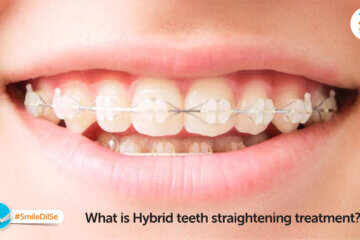Table of Content
Orthodontic treatment using bonded braces has been there for over four decades now. Millions of people have been treated so far using traditional metallic braces. Though people were happy with the results of these metallic braces, they were not very comfortable flashing an ugly, metallic smile. So, there has always been a quest to invent a more aesthetic option to straighten people’s teeth.
Some innovations were introduced such as lingual braces, transparent braces and ceramic braces that were far less obvious than the metallic braces. But, the more recent advances in orthodontic treatments are the clear aligners and are by far the most aesthetic option available till date. Ever since their introduction in the market, clear aligners have been manufactured by different companies and have only improved to what we have today. What’s more? Well, more people are now willing to get their teeth straightened using clear aligners.
Clear aligners, compared to its predecessors are removable in nature. But, these aren’t the first removable appliances used for teeth movement. The first-ever elastic and removable appliance for tooth movement was built in the year 1945 using plastic models. After this, many removable appliances aimed to bring about tooth movements were made. Two of these appliances which were effective and are popular even today include the Essix retainer and clear retainer.
Process of Clear Aligners
Clear aligners are made using polyurethane or polyethylene Terephthalate Glycol that is not just safe but extremely comfortable to patients. Unlike the traditional metallic braces, they do not use metallic wires, brackets or elastics.
These aligners are designed using CAD-CAM technology, the same technology that is used in the manufacturing of cars. An orthodontist needs to undergo special training to be able to perform clear aligner treatments. In the first appointment, the orthodontist uses a digital scanner to take measurements and 3D images of your teeth and bite. These images get uploaded on the cloud and are accessed by the company’s lab and the in-house team of orthodontists.
Using the digital scanner images, advanced software is used to virtually design the patient’s trays and the final result post aligner treatment. Once the treatment plan has been virtually designed, it is shared with the patient’s orthodontist and then shared with the patient.
On the instruction from the orthodontist, the lab manufacturers the upper and lower sets of aligner trays. Each set of trays need to be worn for 22-23 hours each day and for a period of 2-3 weeks each, before moving on to the next set of trays.
Clear aligners can treat a large number of tooth alignment problems such as:
- Crowding
- Spacing
- Rotated teeth
- Open bite
- Closed bite
- Protruded teeth
- Retroclined teeth
Clinical Case Treatment
A young female patient presented with class I malocclusion and a slightly convex facial profile had permanent dentition and a mesial overlap of the left maxillary central incisor over the right maxillary central incisor. There was moderate overjet and a deep bite. She had mild crowding in the upper and lower anterior teeth regions. Her chief complaint was the incisal overlap in the maxillary arch that was making her conscious while smiling. For this reason, she was also concerned about opting for fixed appliance metal braces.
The treatment objectives were to use clear aligners to correct the angulation of her maxillary central incisors, correct the crowding in the maxillary and mandibular arches. Occlusally, the goal was to maintain her class I molar relationship and achieve optimum overjet and overbite, which in turn would also correct her facial profile.
By the 15th week of her treatment, the incisal overlap in the maxillary arch was corrected. However, it took a few more weeks to correct the crowding in the upper and lower arches. By the 27th week, the crowding in both the arches was resolved and the overjet and deep bite corrected as well. The final sets of trays were used for refinement purposes to achieve the end result.
Once the treatment with clear aligners was completed, a fixed lingual retainer was placed on the upper incisors to prevent a relapse. Additionally, the patient is given a Hawley’s retainer in the maxillary arch and a spring aligner in the mandibular. Both these appliances are removable and the patient was asked to wear these for a period of 6 months.
Conclusion
Most clear aligner cases are simple and straightforward like the case mentioned here. But, in many cases, it requires extraction of the premolars, space closures, and bite correction, all of which need other additional techniques.
Clear aligners have many advantages over conventional braces such as better aesthetics, ease of wearing and removing, great comfort, and ease to maintain oral hygiene. Another advantage that clear aligners have is that the patient is able to appreciate the final result virtually even before beginning the treatment. This makes clear aligner treatment more acceptable to the patients. Aligners also cause less pain and discomfort compared to traditional braces further improving patient compliance.
Click here to Download Smile Journey of Year Book.


0 Comments